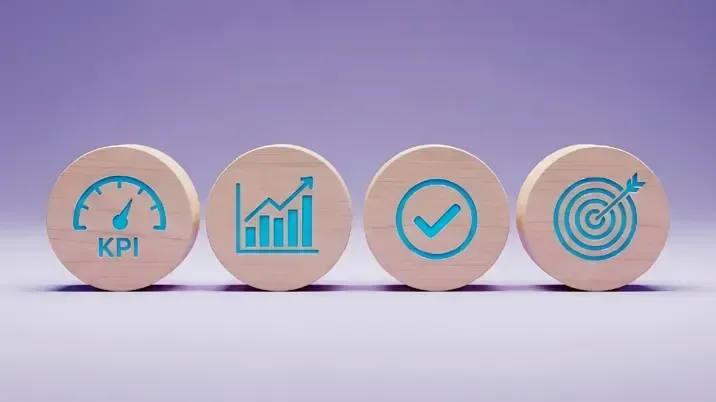Data storytelling: 5 minutes with… Sean Adams

Q: The art of data storytelling is gaining momentum and popularity. But what does this look like for publishers?
A: For publishers, it’s about moving beyond the usual “we delivered X million impressions” conversation to showing how content changes what people think about brands. Instead of just reporting numbers, you’re creating a narrative about the reader journey — how someone goes from never having heard about a brand to actually considering it.
The best publishers I see are connecting their campaign performance to what’s happening in the world, turning engagement metrics into meaningful insights about attention and brand recall. They’re not just telling you what happened last month; they’re using patterns in their data to predict what’s most likely to work next time. Not just “here’s what we delivered”, but “here’s what we think will happen, and why”.
Q: How can publishers apply data storytelling techniques to their campaign metrics?
A: Start with the impact, not the data. Instead of leading with “CPMs were 20% below benchmark”, lead with “we shifted brand consideration by 15% among your target audience”. Then use the underlying metrics to explain how that happened. I always tell publishers to think of their reports like a good story — there’s a setup (the challenge), some tension (what we discovered), and a resolution (how we solved it).
The key is making the data human. The fact that time on page increased by 40% is great, but what brands actually want to hear is that readers were so engaged they spent nearly three minutes with their brand story — which is long enough to shift perceptions. When you can measure brand impact consistently over time, you can tell ongoing stories about how perceptions evolve, which is far more compelling than one-off campaign reports.
Q: Are publishers really interpreting audience behaviour or are they just reacting to it? How can publishers work to be more predictive and less reactive?
A: Most publishers are still playing catch-up, analysing what happened after it’s too late to do anything about it. To get ahead of this, you need to know where brand perceptions start before your campaign even launches. Without that baseline, you’re just guessing about your impact.
The secret is consistent measurement that reveals patterns over time. When you can see how different content formats consistently affect brand perceptions, you start to predict which approaches will work for future campaigns, and what brand lift you can expect.
Q: What steps can publishers take to build teams that are confident using data and analytics to drive revenue?
A: Train your team to think like advertisers think. What keeps CMOs up at night isn’t whether their CPMs were efficient — it’s whether their brand is getting stronger. Once your team understands that connection, they can have much more strategic conversations.
Create simple frameworks that help everyone interpret brand measurement data consistently, so your whole team is telling the same story. The confidence comes from practice. Encourage your team to make predictions, then measure
against them. When they start seeing their insights translate into client success, they’ll naturally become more confident with the data.
Cross-train everyone so your sales team understands brand outcomes, not just reach metrics. When they can confidently explain how your editorial environment drives brand perceptions, they can justify premium pricing.
Q: How can data play its part in helping publishers improve their storytelling for stronger commercial outcomes?
A: Use your brand lift data to figure out which content formats are moving the needle for advertisers. Track how different editorial themes align with brand-building goals — you might discover that your lifestyle content drives stronger brand associations than your news content for certain categories. Measure the halo effect of your editorial environment, showing how just being in your publication impacts overall brand perception.
Create feedback loops between your editorial and commercial teams. When your editors understand which storytelling approaches drive brand lift, they can create content that serves both readers and advertisers. It’s about making your content strategy data-driven while keeping it editorially authentic.
Q: How can publishers start connecting the dots between content and conversion?
A: You need to track the whole journey, not just immediate clicks. Content builds brands, brands drive consideration, and consideration eventually leads to conversions — but that process takes time. Start by establishing benchmarks for how different content environments affect brand perceptions, then track how those perception changes correlate with business outcomes down the line.
Remember that brand-building has a lag time. Someone might read your content today but not buy until next quarter. So create attribution models that account for brand impact over time. When you can show how your editorial environment creates the conditions for conversion, you’re not just selling media space — you’re selling business results.
Q: What's in the pipeline for Brand Metrics?
A: We’re really focused on helping publishers tell better stories with their data. There’s huge demand from publishers, networks, and broadcasters who want to make brand lift central to what they offer clients, so we’re expanding to support that growth. It’s exciting to see publishers test how different content formats, audience segments and editorial approaches actually impact brand perceptions.
All this experimentation is building massive benchmark databases, which gives our publisher partners incredible context for their campaigns. But here’s what I’m most excited about — we’re exploring predictive analytics using AI trained on brand lift data. Imagine being able to guide campaign planning decisions toward specific brand outcomes rather than just broad media objectives. Instead of hoping a campaign will work, you’d know which approach is most likely to drive the brand lift your client needs. That’s the future we’re building toward.
Also published in: InPublishing



